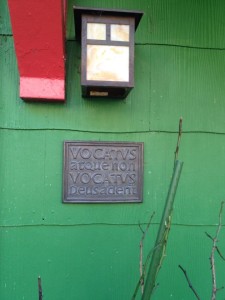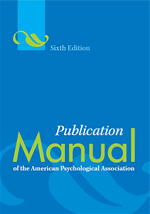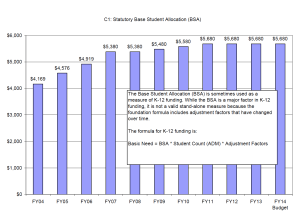 Told, “take two aspirin, ponder why Emerson is like a hotdog and call me in the morning”, my correspondent snapped back, “You may as well have asked why is a raven like a writing desk.” Precisely. Hence my title, borrowed from Deacon Dodgson, and the following comments, to serve as my demurrer.1
Told, “take two aspirin, ponder why Emerson is like a hotdog and call me in the morning”, my correspondent snapped back, “You may as well have asked why is a raven like a writing desk.” Precisely. Hence my title, borrowed from Deacon Dodgson, and the following comments, to serve as my demurrer.1
A veritable crisis of choice confronts us, leading the decriers to despair of Panglossian paralysis. 2 Not only do we suffer from the apparent number of choices, but from the terrifying prospect that the type of oats we select to consume for breakfast might not provide the greatest contribution to our long term health! We could be wrong!
It is perhaps easier to laugh with Voltaire than with Swift. Skewered Leibniz (peut etre Pangloss-en-pot, ou Candide en cocotte) is far more palatable than well-Nursed Child “Stewed, Roasted, Baked, or Boyled, and I make no doubt that it will equally serve in a Fricasie, or Ragoust”, at least for most of us. Some seem pleased enough to order from Adams’ Ameglian Major talking cow, who reprised the good news invitation, “Take and eat; this is my body.”
“But what”, you might ask, “does any of this have to do with, ‘Why is Emerson is like a hot dog?'”
Carrol, of course, was just yanking his readers’ chains, uninvited guest not withstanding. But riddling out the function of riddles has been a focal point of human endeavor for some time.3 For my purposes, I want to focus on two kinds of more mundane queries, the leap and the slog. The slog is a favorite of the Socratic pedant; a question posed to facilitate the journey (much as the uninvited guest becomes the journey’s host here.) The leap, known to Sojourners in the East as the ‘koan’, is intended neither as the trail of crumbs nor as the dog at your footsteps, but incites you to hurl your psyche across the void where, having presumably leapt in the right direction, the light will click on. [I should think that a discussion of How the Leaper Got His Spots is no more apropos of this discussion than the fable of The Fox, The Goat and the Well and I shall leave Mr. Peabody to address same with Rudyard and Aesop as time may allow.]
But the slogger, unlike the quantum acrobat, will have stumbled on to the suggestion that maybe Voltaire was a little too clever for his own good, not to mention, though Barth does, “It’s as if–as if the key to the treasure is the treasure!”
“A mighty hotdog is our Lord!”
The Purveyor of the Great American Antidote was Ralph Waldo Emerson. 4 Ralph was an “‘Engage’, already!” kind of guy. And his anthem, Self Reliance, stirs us today as it did when first presented.
Trust thyself: every heart vibrates to that iron string. Accept the place the divine providence has found for you, the society of your contemporaries, the connection of events. Great men have always done so, and confided themselves childlike to the genius of their age, betraying their perception that the absolutely trustworthy was seated at their heart, working through their hands, predominating in all their being. And we are now men, and must accept in the highest mind the same transcendent destiny; and not minors and invalids in a protected corner, not cowards fleeing before a revolution, but guides, redeemers, and benefactors, obeying the Almighty effort, and advancing on Chaos and the Dark.
Fear not, nor a coward be. Engage.
The magnetism which all original action exerts is explained when we inquire the reason of self-trust. Who is the Trustee? What is the aboriginal Self, on which a universal reliance may be grounded? What is the nature and power of that science-baffling star, without parallax, without calculable elements, which shoots a ray of beauty even into trivial and impure actions, if the least mark of independence appear? The inquiry leads us to that source, at once the essence of genius, of virtue, and of life, which we call Spontaneity or Instinct.
Every question raised is first a choosing, the path of discovery unfurling, the only choice the choosing.
Have we lost our way and ended up with the Lords a’Leaping after all? Ralph is not suggesting you wear a bag over your head, as I think Anasta is pointing out. Self-Reliance is about not being afraid of your shadow, about trusting in the process that brought you to this, only the most recent of all the forks in the road that have presented themselves. Have faith in the evidence of your own process.
Spinoza is known for his thesis Deus siva natura, which translates in English to, “The world is your hotdog.” Ralph’s corollary to Baruch’s argument? Eat! Go ahead. Take a big bite. With ketchup and onions, or sauerkraut and mustard. It’s not a big deal, and you have it under control. And when you are asked, “Cake or death?” I am sure you will know what to say then as well.
Bon appétit!
_____________________
Notes
1. My initial “text”, as it were, was Letter to Demetrias, one of the few extant examples we have of Pelagius’s writing, and Alice was pointed to an introduction to same (Rees, 35), the focus of our discussion revolving around “choice”. While Bill Clinton’s virginal lungs will, for many, forever pose the lingering question of what the unschooled are expected to swallow, some Americans, like Hawthorne’s Goodman Brown, might still see the posing of the question as engaging in heresy, much as Augustine did. Augustine and Pelagius came to different conclusions about choice, and about the ramifications of choice, and for those who take the one less traveled, that will make, as Frost agrees, all the difference.
To be fair, Pelagius argues one must keep one’s eyes on the prize, but he argues that the choice is a continuing challenge, and that it is in the striving that one finds blessing. And Frost does not argue that the path made the difference; he suggests we will see it that way eventually. But the wily Frost, in always being obscure, still leaves us at the fork in the road. Our lives are simply chains of choices (no matter how you define chains.)
2. While some would argue that the “paradox of choice” is much ado about nothing, it would be only fair to allow Schwartz the opportunity to explain himself: http://www.pbs.org/newshour/making-sense/is-the-famous-paradox-of-choic/ Perhaps what is in issue is not the challenge of making a choice, but the misperception of the nature of choosing. If the result of the choice is a selection of one of 52 varieties of sugared grain breakfast product, none of which is a very healthy alternative, why choose?
3. Kinkaid, in reviewing Huxley’s The Raven and the Writing Desk, writes,
Primarily, however, Huxley’s book deconstructs the meaning of the
riddle and mocks our attempt to find coherent rules for the game of
nonsense. He uses “evidence” in such a way as to parody positivistic
solidity, ranging wildly through biography, linguistics, the mechanics
of punning, game theory, alliterative patterns, philosophy, Carroll’s
own number codes, and Anglo-Saxon grammar. All these give us clues
that lead us to see that both the riddle about the raven and the writing
desk and the riddle about the meaning of nonsense are unanswerable.
4. I would be remiss, in an essay that touches on the paralysis of choice if I did not offer a different take on Emerson. Anasta certainly gives one pause to consider Emerson’s prescription, but having hoisted himself, arguably, on his own petard, might not the argument be largely cautionary, as opposed to antagonistic?
Other Works Mentioned
Anastas, Benjamin. “The Foul Reign of Emerson’s ‘Self-Reliance.’” The New York Times, December 2, 2011, sec. Magazine. Accessed March 26, 2014. http://www.nytimes.com/2011/12/04/magazine/riff-ralph-waldo-emerson.html.
Barth, John. Chimera. Houghton Mifflin Harcourt, 1972.
Emerson, Ralph Waldo. The Essay on Self-Reliance. East Aurora, N.Y: The Roycrofters, 1908. https://openlibrary.org/books/OL7211683M/The_essay_on_self-reliance.
Huxley, Francis. The Raven and the Writing Desk. Harper & Row, 1976.
Matthew, 26:26
Rees, Brinley Roderick. Pelagius: Life and Letters. Boydell & Brewer Ltd, 1988.
Swift, Johnathan, and Jack Lynch. “A Modest Proposal.” University instructor resources. Swift, “A Modest Proposal.” Last modified January 17, 2011. Accessed March 26, 2014. http://andromeda.rutgers.edu/~jlynch/Texts/modest.html.
Voltaire. Candide, Or, Optimism. Penguin, 1947.
For Your Further Viewing and Amusement
– https://www.youtube.com/watch?v=f_MEpww2MHA
– https://www.youtube.com/watch?v=niOm01dEzzI
– https://www.youtube.com/watch?v=-ECUtkv2qV8


 Told, “take two aspirin, ponder why Emerson is like a hotdog and call me in the morning”, my correspondent snapped back, “
Told, “take two aspirin, ponder why Emerson is like a hotdog and call me in the morning”, my correspondent snapped back, “





 I recently had a tutee complain bitterly about an teacher marking down papers because the papers did not comply with the instructors perspective on a particular style manual. It is not the first time for pompous declarations on all manner of style issues, and this time, I though I would follow through and pose the question presented to the style experts at the APA.
I recently had a tutee complain bitterly about an teacher marking down papers because the papers did not comply with the instructors perspective on a particular style manual. It is not the first time for pompous declarations on all manner of style issues, and this time, I though I would follow through and pose the question presented to the style experts at the APA.

